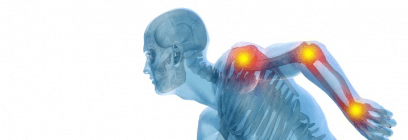Elevating One’s Range of Motion Routine through Effective Myofascial Release Techniques
Foam serves as an valuable technique which can greatly boost a individual's range of motion program. It includes using a round foam roller to exert pressure to designated areas of the body. This technique is known as SMR, which aids in alleviating muscle tightness and supports overall flexibility. Many athletes and exercise participants add foam rolling into their pre-exercise routine and recovery sessions to condition their muscles for activity and aid in recovery subsequently. Understanding how to use foam rolling correctly can support better performance and a lowered risk of physical setbacks.To start, it is important to choose the suitable foam roller. Foam rollers come in different densities and dimensions. A gentler foam roller is suitable for beginners or those with muscle tenderness, while a harder roller can provide deeper pressure for more seasoned users. The length of the roller should also be taken into account; longer rollers can be advantageous for broad regions, while smaller ones are better for focusing on precise spots. Once the right roller is chosen, individuals can begin to integrate foam rolling into their routine successfully.
When using a foam roller, it is crucial to focus on controlled movements. Rolling over tense areas too rapidly can cause discomfort and may not provide the intended benefits. Instead, individuals should roll gradually over each muscle group for 30 seconds to two minutes. This allows the muscles to release tension and helps to release knots and tight spots. Deep, steady breathing while rolling can also improve relaxation and effectiveness. Targeting key areas such as the calves, thighs, rear thighs, and back can lead to noticeable improvements reference in flexibility.

Additionally, combining self-myofascial release with flexibility exercises can maximize flexibility benefits. After using the mobility tool, it is helpful to perform stationary stretches on the same muscle groups that have been rolled out. This approach helps in stimulating blood flow and increasing the range of motion in those muscles. For example, after rolling the hamstrings, stretching them by Look At This executing a toe-touch stretch can significantly enhance flexibility. Integrating these techniques into a regimen ensures that muscles are both relieved of tightness and elongated.
In conclusion, consistency is key when it comes to foam rolling and enhancing flexibility. Integrating foam rolling into a regular routine can provide sustainable benefits. It is suggested to spend at least 10 minutes a few times a week focusing on different muscle groups. By making foam rolling a regular practice, individuals will likely see enhancements in their flexibility over time. This method not only primes the body for physical activity but also contributes to recovery and preservation of overall muscle health, making it an essential addition to any fitness routine.